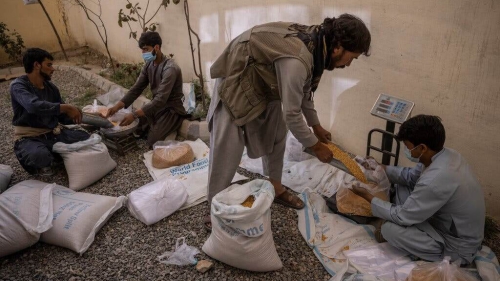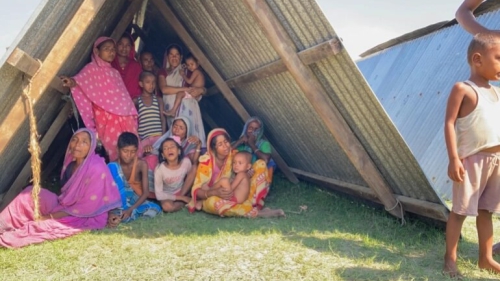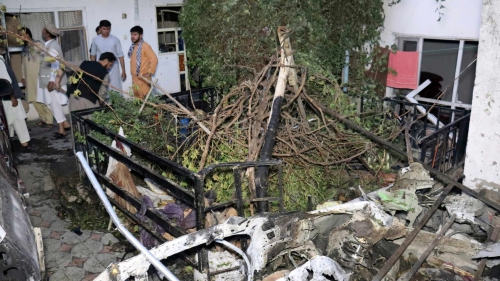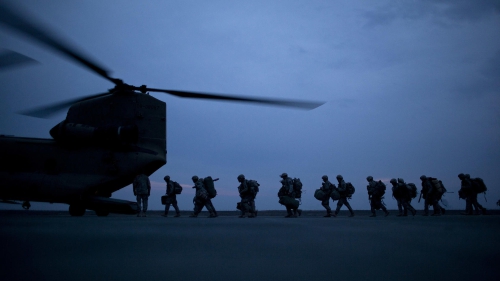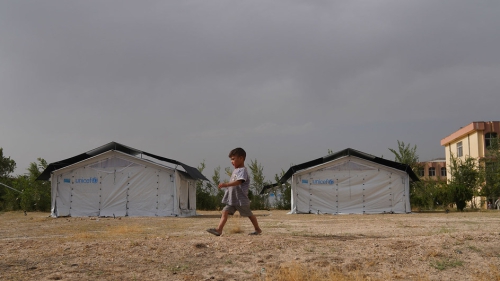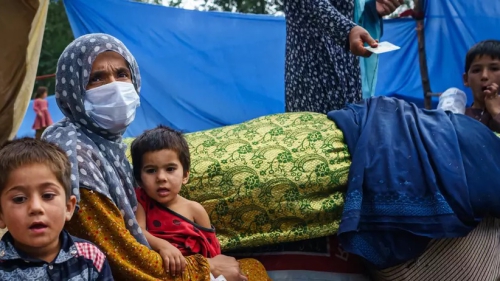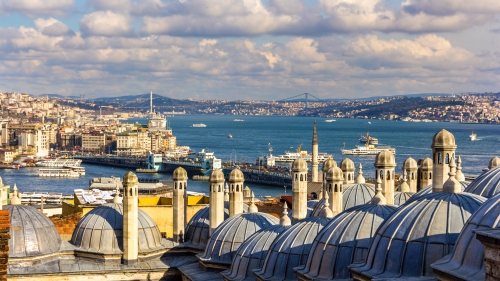The Rise, Fall, and Rebirth of the Taliban

The Taliban (meaning 'students' in Pashto and Arabic) are a religious, political and military organization in Afghanistan. They proclaim to have a strong faith in Islam and illustrate a belief in an interpretation and application of Islamic Sharia law without much context to the cultural setting of the 21st century.
The Taliban’s Origin
In fact, a partial origin of the Taliban can be traced back to the Soviet invasion of Afghanistan during the late 70s and early 1980s. The Soviets had invaded the country in 1979, and in response, US President Reagan met with the Afghan Mujahideen (before the Taliban movement) and supported financially as well as militaristic support to resist Soviet invasion. Finally, the Soviets withdrew from Afghanistan in 1989 when the Taliban movement gained power, and they ruled the country from 1996 to 2001.
Interestingly enough, it was within the neighboring country of Pakistan [in refugee camps] in the early to mid-1990s, that the modern-day Taliban movement actually gained traction. The group swept into power in the mid-90s and eventually captured most of the country of Afghanistan.
After 9/11, then US President George W. Bush demanded that the Taliban hand over the terrorist leader Bin Laden and other Al Qaeda leaders. When the Taliban balked, the United States invaded Afghanistan in Oct 2001.
The Graveyard of Empires
Yet, Afghanistan is certainly not new to the concept of foreign invasion and war. In fact,
Afghanistan is often referred to, via its moniker, as “the graveyard of superpowers,” due to Britain, Russia, and the United States failing to claim the country for any significant period of time [and not without suffering catastrophic losses].
Afghanistan was attacked on three different instances by the British Empire in 1839, 1878, and 1919 in an effort to blockade the Russian expansion, but the Afghan forces defeated them each time.
King Amanullah Khan defeated the British for the final time in 1919 and introduced several modern reformations. However, with a civil war in 1928, he was deposed. Subsequently, King Zahir Shah ruled the country from 1933-1973 before abruptly leaving due to a communist uprising.
The US Invasion of Afghanistan
Following the already mentioned Soviet invasion during the 1980s, it would not be until roughly a decade later, that a new foreign invasion would again commence. Due to the September 11th terrorist attacks, the United States invaded Afghanistan under the pretense that the Taliban were housing Osama Bin Laden, who is claimed to have orchestrated the attacks. And by December 2001, the Taliban was ousted from its final stronghold Kandahar.
Many Afghans celebrated the end of a dark era of harsh repression, public stoning, and the hanging of those who disobey the sharia laws. At the time, the speed of the Taliban's collapse seemed quite swift.
The U.S. and its allies had toppled the Taliban government and most of the Al Qaeda and Taliban officials who survived fled to Pakistan. Thus, the main objective of destroying the Taliban and removing Al Qaeda leadership was accomplished by December 2001, an opportune time when Americans could have left Afghanistan.
Despite this seeming possibility, the U.S. decided in favor of a sort of “nation-building” agenda; with the U.S. building an Afghan army to prevent the Taliban from reemerging. Subsequently, the U.S. developed a program of converting Afghanistan into a modern democratic country by implementing secular, liberal policies, without realizing that a sizable portion of the country’s people [many of which come from a rural background] did not welcome these changes.
Despite the United State’s ill-advised agenda, the U.S. increased armed forces to seventy thousand during the Bush administration and a hundred thousand during the Obama administration.
Mistakes of the United States
However, the United States committed a grave error in its mismanagement of aid. An ineffective U.S. presence allowed the Taliban to portray themselves as a nationalist movement, implicating their Afghan rivals as puppets of a foreign power.
The U.S. had a wrong impression that liberal, moderate, and non-practicing Muslims would be the best leaders for a Muslim country, such as that of Afghanistan. In retrospect, an American liberal-secular system would never be appealing nor compatible with any Islamic country.
The only group which did benefit from this occupation of Afghanistan was the U.S. military-industrial complex. For 20 years, four Presidents, both Republican, and Democrats, supported military contractors such as Blackwater, which gained billions of dollars through an unjustified war.
Interestingly enough, many media outlets reported the Taliban atrocities widely and ignored those committed by western forces, and their allies. According to various newspaper reports during the U.S occupation, 300,000-strong Afghan and U.S. forces committed atrocities throughout Afghanistan. These include theft, rape, kidnapping, and extortion. In addition, thousands of air and drone strikes have killed thousands of civilians.
The Afghan occupation cost the United States taxpayers over 2 trillion dollars, the loss of over 2,000 US soldiers’ lives, and the deaths of hundreds of thousands of Afghans.
When the former president Donald Trump assumed office, he had reduced the U.S. forces to seventeen thousand in number, and the U.S. started peace talks with the Taliban and announced that U.S. forces would be leaving the country by May 2021.
By the time president Biden took over, the U.S. had reduced the forces to twenty-five hundred, mostly providing logistics and air support. In truth, the U.S. misread the Taliban's strength and capabilities and overestimated the power of the Afghan government.
The Taliban Reconquer Afghanistan
However, two decades later, it took the Taliban just two days to overrun Kandahar [the seat of their operations] and many of the country’s various provincial capitals, and in a couple of months, they marched on Kabul. Incredibly, the group took control of most of the country in under 10 days –much quicker than the United States had taken in 2001. And given this, it can genuinely be claimed that the Taliban's reclamation of their country against the United States, is the only Muslim victory in the last several hundred years against Western colonialists.
Just within the past month, the Taliban regained control of almost the entirety of the Afghan nation via a blitz offensive. The Taliban somewhat confronted a large Afghan army of 350,000 soldiers who were well-equipped with modern weaponry, an air force, and were well-trained by Americans for over 20 years. It is purported that the Taliban have 60,000 active fighters, having fought much of their battles with soviet age Kalashnikov and rocket-propelled grenades all without the major support of any world power [albeit the United States did assist the Taliban during the Soviet occupation].
In a way, given the Afghan army’s dependence on American support, they did not show any will to fight for their so-called country. When the Afghan troops lost American support given their American counterparts’ departure from the country, they fled. Interestingly enough, these Afghan soldiers joined the army to gain power, wealth, property, and status in the community.
Yet, instead of sacrificing their lives for a greater cause of the country, they surrendered. The Taliban achieved their success with a limited budget, mostly from taxes collected in the areas under their control or profits from opium exports.
The Afghan government knew from May 2020 that the Trump administration was negotiating a withdrawal from the country with the Taliban by May 2021. But they failed to retain power. As a result, President Biden stated, "We could not provide the Afghan army a will to fight for their country and their future."
An Unclear Afghan Future
In truth, the current situation within the country has left an unpredictable future in Afghanistan. The Taliban have declared a new government, with the so called “Imarat-e-Islami” Afghanistan likely differing greatly from the previous government.
And with the Taliban now in power once again, women, in particular, will only have certain rights as defined under the new government’s ideology. Yet in addition to this already perplexing system, various local Taliban commanders and fighters have appeared unsure of what rules to enforce, so conditions will likely vary depending on different parts of the country and the leadership.
The Taliban have announced that there would be no violence on their part, and they have asked all businesses and government offices to resume their usual work. In addition to this, the Taliban have ordered the fighters not to enter the houses without permission to protect life, property, and honor. And interestingly enough, an announcement has been made that girls will be able to go back to school. Furthermore, since their return to power, the Taliban apparently tolerated a small group of women protesting in Kabul, demanding work, education, and political participation.
The country of the Afghans represents a myriad of multiple ethnicities and languages. There are fourteen officially recognized ethnic groups within Afghanistan, with the Taliban being a completely Sunni and overwhelmingly Pashtun group.
Of course, with the Taliban really representing only one ethnic group’s interests within the nation, rivalry amongst other ethnic groups and religious sects have erupted. And unless the Taliban recognize and try to build harmonious relationships amongst these various groups, a truly peaceful Taliban reign will be a hard fought battle.
Taliban must show tolerance towards peoples of all faiths and belief systems and build harmonious relationships within the community groups not through fear but via acceptance.
The Taliban need to cultivate a diplomatic mindset in its newfound role of power and develop cooperative relationships with their neighbors. And by fully concentrating on creating a country focused on industrial development, perhaps a new and more successful Afghanistan may emerge. As stated below, they must follow the Quranic guidelines for developing a pluralistic community showing toleration and acceptance.
"And had your Lord willed, those on earth would have believed, all of them together. So, will you (O Muhammad) then compel mankind, until they become believers." (Quran 10:99)
"Surely those who believe, and those who are Jews, and the Christians, and the Sabians — whoever believes in God and the Last Day and does good, they shall have their reward from their Lord. And there will be no fear for them, nor shall they grieve." (Quran 2:62)
O humanity, indeed We have created you from male and female and made you peoples and tribes that you may know one another. Certainly, the noblest of you in the sight of Allah is the most righteous of you. Indeed, Allah is Knowing and Acquainted. (Quran 49:13)
Dr. M.Basheer Ahmed is a former professor of Psychiatry Southwestern medical school Dallas Texas and chairman emeritus of Muslim Community center for Human Services North Texas. He is available at [email protected]
Topics: Afghanistan, Taliban, War In Afghanistan (2001-2021)
Views: 2407
Related Suggestions








